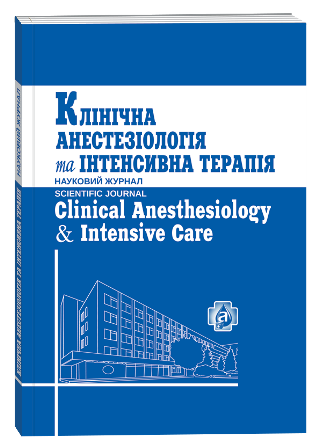INDUCED DEPRESSION IN A COHORT OF RATS VIA COMMUNICATION
DOI:
https://doi.org/10.31379/2411.2616.12.2.1Keywords:
Infectious depression, rodents, cohabitation sucrose test, open field test, forced-swim testAbstract
More research is required to grasp the phenomenon that is infectious depression entirely. Misunderstandings of this phenomenon stem from lack limited data. There are presently no methods for investigating transmissible depression. Thus, understanding the mechanisms involved in the processes of contagion, preclusion, repression, and treatment remains a mystery. Our aim here was to construct a method of evaluating infectious depression in rats via communication. The induction process for depression consisted of some very stressful activities detailed in the method and material section. Rats were allowed to navigate these activities over five weeks, after which they were tested for depression by their affinity to sucrose. Those rats that showed depressive behaviors were allowed to share a space with healthy ones for a further five weeks in a 1 : 2 ratio. For confirmation of results, we run sucrose test, open field test, and forced swim test at the end of cohabitation. We showed in our experiment how healthy rats became infected after spending a considerable amount of time caged with depressed rats. Likewise, infected rats had a noticeable positive effect on the depressed rats. Given the unusable nature of rats post-trauma after the use of the forced swim test, more in-depth studies may be required for further validation of this procedure.
References
Bastiampillai T., Allison S., Chan S. Is depression contagious? The importance of social networks and the implications of contagion theory Aust N Z J Psychiatry. 2013. Vol. 47, № 4. P. 299–303.
Establishment of an animal model of depression contagion / M. Boyko et al. Behavioural Brain Research. 2015. Vol. 281. P. 358–363.
The influence of aging on poststroke depression using a rat model via middle cerebral artery occlusion / M. Boyko et al. Cogn Affect Behav Neurosci. 2013. Vol. 13, № 4. P. 847–859.
The neuro-behavioral profile in rats after subarachnoid hemorrhage / M. Boyko et al. Brain Res. 2013. Vol. 1491. P. 109–116.
Depression, and anxiety impair health-related quality of life and are associated with increased costs in general medical inpatients / F. Creed et al. Psychosomatics. 2002. Vol. 43, № 4. P. 302–309.
Incidence of disability among preretirement adults: the impact of depression / D. D. Dunlop et al. Am J Public Health. 2005. Vol. 95, № 11. P. 2003–2008.
Fowler J. H., Christakis N. A. Dynamic spread of happiness in a large social network: longitudinal analysis over 20 years in the Framingham Heart Study. BMJ. 2008. Vol. 337. P. 23–38.
Depression and health-related quality of life / B. N. Gaynes et al. J Nerv Ment Dis. 2002. Vol. 190, № 12. P. 799–806.
Hatfield E., Cacioppo J. T., Rapson R. L. Emotional contagion. Vol. VII. Cambridge: Cambridge University Press, 1994. 240 p.
Emotions as infectious diseases in a large social network: the SISa model / A. L. Hill et al. Proc Biol Sci R Soc. 2010. Vol. 1701, № 277. P. 3827–3835.
Joiner Jr T. E. Contagious depression: existence, specificity to depressed symptoms, and the role of reassurance seeking. J Pers Soc Psychol. 1994. Vol. 67, № 2. P. 287–296.
Joiner Jr T. E., Katz J. Contagion of depressive symptoms and mood: meta-analytic review and explanations from cognitive, behavioral, and interpersonal viewpoints. Clin Psychol: Sci Pract. Vol. 6, № 2. P. 149–164.
Kalueff A. V., Tuohimaa P. Experimental Modeling of anxiety and depression. Acta Neurobiol Exp. 2004. Vol. 64. P. 439–448.
Optimizing outcomes in depression: focus on antidepressant compliance / M. B. Keller et al. Int Clin Psychopharmacol. 2002. Vol. 17, № 6. P. 265–271.
Lang U. E., Borgwardt S. Molecular mechanisms of depression: perspectives on new treatment strategies Cell Physiol Biochem: Int J Exp Cell Physiol Biochem Pharmacol. 2013. Vol. 31, № 6. P. 761–777.
The association of late-life depression and anxiety with physical disability: a review of the literature and prospectus for future research / E. J. Lenze et al. Am J Geriatr Psychiatry. 2001. Vol. 9, № 2. P. 113–135.
Ocampo B., Kritikos A. Interpreting actions: the goal behind mirror neuron function. Brain Res Rev. 2011. Vol. 67, Iss. 1/2. P. 260–267.
Cost-utility analysis studies of depression management: a systematic review / P. A. Pirraglia et al. Am J Psychiatry. 2004. Vol. 161, № 12. P. 2155–2162.
Indicators of positive and negative emotions and emotional contagion in pigs / I. Reiment et al. Physiol Behav. 2013. Vol. 109, № 17. P. 42–50.
Rosenquist J. N., Fowler J. H., Christakis N. A. Social network determinants of depression. Mol Psychiatry. 2001. Vol. 16, № 3. P. 273–281.
Impact of psychiatric disorders on health-related quality of life: general population survey / S. I. Saarni et al. Br J Psychiatry. 2007. Vol. 190. P. 326–332.
Siebert D. C. Depression in North Carolina social workers: implications for practice and research. Social Work Res. 2004. Vol. 28. P. 30–40.
Slattery D. A., Cryan J. F. Using the rat forced swim test to assess antidepressant-like activity in rodents. Nature Protocols. 2012. Vol. 7. P. 1009–1014.
Health related quality of life measured with EQ-5D in patients treated for depression in primary care / P. Sobocki et al. Value Health. 2007. Vol. 10, № 2. P. 153–160.
Peer contagion and adolescent depression: the role of failure anticipation / M. H. Van Zalk et al. J Clin Child Adolesc Psychol. 2010. Vol. 39, № 6. P. 837–848.
The costs and benefits of enhanced depression care to employers / P. S. Wamg et al. Arch Gen Psychiatry. 2006. Vol. 63, № 12. P. 1345–1353.
Willner P. Chronic mild stress (CMS) revisited: consistency and behavioural, neurobiological concordance in the effects of CMS. Neuropsychobiology. 2005. Vol. 52, № 2. P. 90–110.
Enhanced antidepressant-like effects of electroacupuncture combined with citalopram in a rat model of depression / J. Yang et al. Evid Based Complement Altern Med. 2013. doi: 10.1155/2013/107380.
New Method for Inducing a Depression-Like Behavior in Rats / V. Zeldetz et al. J. Vis. Exp. 2018. Vol. 132. P. 571–579. doi: 10.3791/57137.







